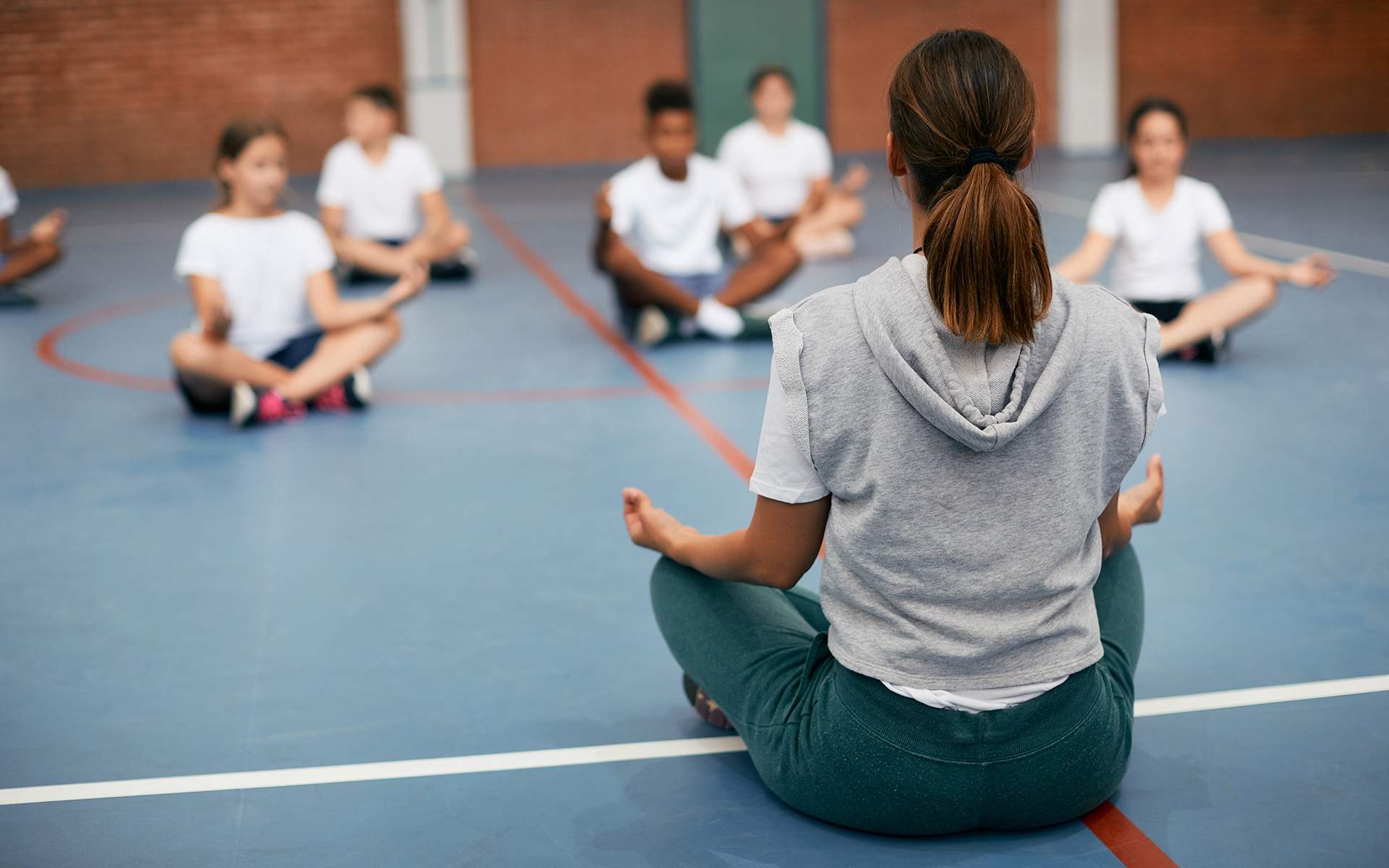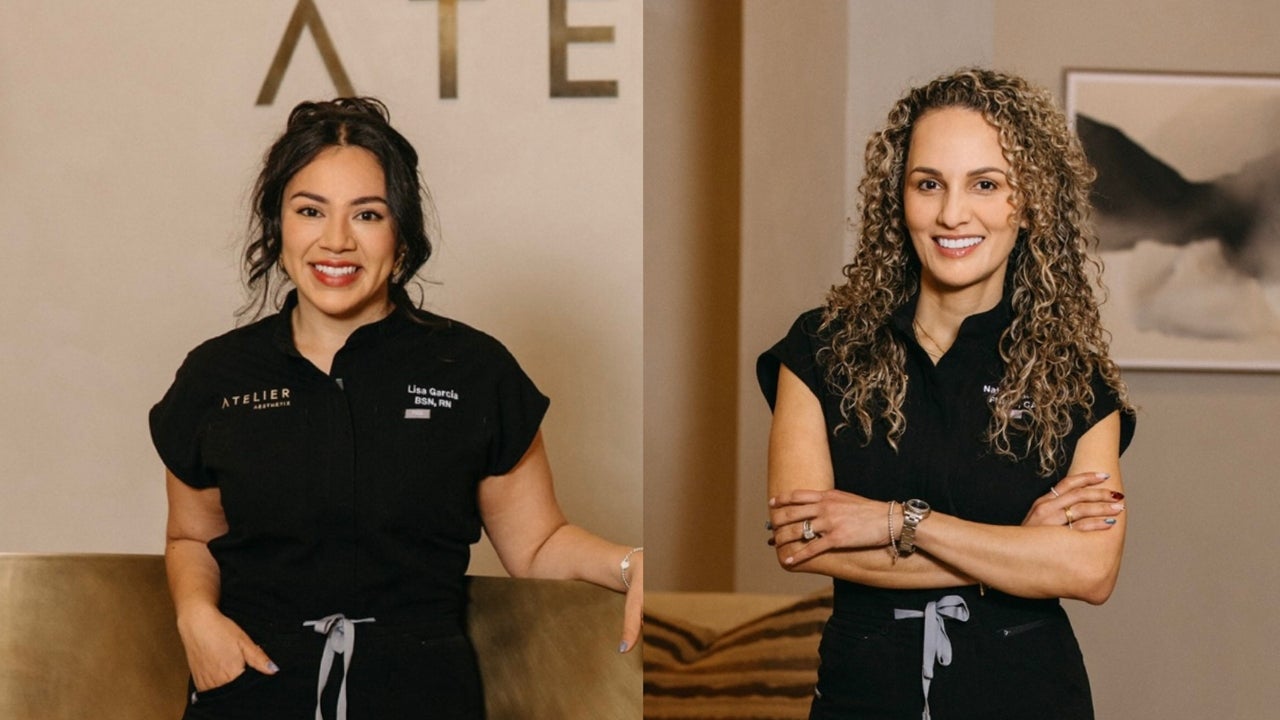The Whole Child Matters—What It Means to Have Mindfulness in Schools
More schools are bringing meditation to their classrooms. Writer Leslie Garrett spoke to teachers and mindfulness leaders about how it supports students, teachers, and their wider communities. The post The Whole Child Matters—What It Means to Have Mindfulness in...

It was my daughter’s ninth birthday party and I’d lost track of the birthday girl. A group of fourth graders were in the kitchen attempting homemade pasta, the dogs were sniffing around for dropped bits of dough, and one of the party guests was loudly trying out the rented karaoke machine.
When I found my daughter, she was sitting with her legs crossed in the lotus position two rooms away, her eyes closed, her hands on her thighs. I called her name. She opened one eye to look at me. “What are you doing?” I asked. “You have guests in the kitchen.”
“I need calm,” she responded, a slight grin on her face. Preach, I thought, returning to the chaos of the kitchen.
My daughter later explained to me that her fourth-grade teacher had recently introduced meditation to her class, leading students in box breathing and centering themselves. My daughter, easily stressed and often overstimulated, had recognized in meditation something she needed.
How Mindfulness Helps Both Students and Teachers
When Jill Guerra asks her students if they’re sometimes mean to themselves, she says, almost everyone raises their hand. “I teach them compassion for themselves and others. We talk about that a lot.”
She loves watching her students at Manzanita SEED Elementary School in East Oakland grow and change from when they start until they leave after grade five.
Guerra was already an elementary school teacher when she discovered mindfulness. “I was burning out,” she says. So when an organization called Mindful Schools showed up at her school twice a week to teach students mindfulness, Guerra was intrigued. “The kids really loved it,” she says.
“Quiet inside,” was how one of Guerra’s kindergartners described feeling after a mindfulness exercise. One of Guerra’s fifth graders told her that “my heart feels less heavy, and I feel lifted.”
When teachers were given the opportunity to train in mindfulness, Guerra “jumped on it.” At first, it was simply part of her larger teaching role. After a few years, she says, “It was all I wanted to do.” So, when she got an email from an Oakland school that wasn’t performing well but had received a grant to implement mindfulness and yoga, Guerra jumped at the opportunity and was hired.
Five years later, she’s still there.
“Quiet inside,” was how one of Guerra’s kindergartners described feeling after a mindfulness exercise. One of Guerra’s fifth graders told her that “my heart feels less heavy, and I feel lifted.”
Does Mindfulness in School Work?
Increasingly, meditation is being understood as something all students need, or could, at the least, benefit from. And a handful of programs around the US aim to deliver it into schools. While their approaches vary slightly, the leaders creating these programs are united in their belief that mindfulness and meditation are valuable tools that can help students manage such issues as poverty, trauma, violence, and stress, as well as more garden-variety test anxiety and tech overload.
Surprisingly, however, the largest study to examine mindfulness in schools—dubbed the MYRIAD study—indicated that mindfulness didn’t, in fact, improve students’ mental health. What it did do, the study indicated, was help teachers.
Critique of the study’s findings pointed to its basis in an eight-week compulsory student mindfulness program. Better success, it was theorized, might come if mindfulness was incorporated into the overall curriculum, and if it lasted throughout the year. And indeed, some mindfulness programs in schools, including the ones we looked at for this story, are long term, part of a school’s overall climate, answering at least some critiques of the MYRIAD findings.
What’s more, those involved in delivering mindfulness to students (and, frequently, their parents and teachers) describe a climate of increased respect, fewer in-school fights, less truancy, and higher test scores.
Compassionate Classrooms
Consider Kara Cosby’s students, most of whom, she says, have been dealt a tough hand. Cosby is a teacher at one of the Jefferson County Public Schools (JCPS) in Louisville, Kentucky. Louisville is one of the largest urban districts in the United States, serving roughly 96,000 kids. The kindergarten to grade five students at Cosby’s school are mostly Black and Brown, she says, and most experience poverty. “We’re struggling on every front,” she says. So, when Cosby had the chance to bring mindfulness to her students six years ago, via a program called the Compassionate Schools Project in cooperation with the University of Virginia, she eagerly took it on.
It hasn’t been easy. “I thought I knew bad behavior,” she says. But by her second week at the school, she says, “I’d never dealt with that level of disrespect.” Kids threw things in her classroom, and there were fights every day.
Over the years that she has implemented the program, Cosby has tailored it to suit both her approach and the students’ needs. “I’ve introduced music,” she says. “We have lights off. We do meditation, we focus on the sound of the chime, we do deep breathing.” Her lessons typically run 30 to 40 minutes, followed by games which reinforce the concepts, including, Cosby says, how to treat each other with respect, and how to lose and be okay with it.
“It tells me that kids are craving an outlet, they need something to help them cope.”
Kara Cosby, school teacherDuring the height of the COVID pandemic, Cosby took her curriculum to Zoom. Her students sometimes showed up with younger siblings. “I’d have five, six kids in front of the screen during my sequence,” she recalls. Cosby often hears from parents that the kids are bringing home what they learn in her class and teaching their family. “It tells me that kids are craving an outlet, they need something to help them cope,” she says.
Cosby has created what she calls Compassion Coupons. If a student is getting upset or is about to fight, Cosby explains, “instead of the kid getting in trouble, teachers hand them a Compassion Coupon and say, ‘Go deliver this to Ms. Cosby.’” When the kids show up, Cosby invites them in to talk about why they’re there. After 15 to 20 minutes, calmer and with their nervous systems less activated, they’re ready to go back to class.
Empowering the Students
Replacing punishment with curiosity and compassion is also the thinking behind Holistic Life Foundation (HLF)’s programs. Atman and Ali Smith, together with their friend Andres Gonzalez, created HLF in Baltimore, where the two brothers grew up with a father who’d found healing in mindfulness and yoga when the boys were young. Atman Smith notes that Baltimore County has many students from underserved communities dealing with trauma. Like Kara Cosby, he believes that all students can benefit from mindfulness. “They can learn how to make their inner environment peaceful, even if the outward environment isn’t,” Smith says.
HLF, which offers mindfulness programming in schools from kindergarten through high school, starts by getting a school’s administrators on board, then the teachers. “We see how we can adapt our program to their specific environment,” Smith says.
The Foundation offers a wide variety of programs in its member schools, all rooted in the conviction that mindfulness skills can improve student outcomes in ways large and small. Each day starts with a mindfulness reminder over the loudspeaker “to get kids centered and grounded and tap into that inner peace when they come into school,” Smith says. Foundation staff will also go into classrooms. “If there’s a classroom, like, bouncing off the wall after lunch or during transition time or something like that, our staff members will go into the different rooms and do a three- to five-minute practice to get the kids centered, to make classroom management that much easier.” These staff members are also available to de-escalate crisis situations.
“They can learn how to make their inner environment peaceful, even if the outward environment isn’t.”
Atman Smith, co-founder of Holistic Life FoundationHolistic Life Foundation believes in empowering the young people themselves. Its Mindfulness Ambassadors program seeks out and trains students in the community that can be leaders—even students, Smith said, who might currently be leading others in the wrong direction. Mindful Ambassadors help during times of high anxiety, such as during test periods. “When we did an expansion program in Louisville, Kentucky,” Smith says, “the school [achieved] the highest ACT scores in history.” Consequently, the program gained a lot of notoriety, thanks to a viral Upworthy video and subsequent media appearances.
Holistic Life Foundation has also implemented a program similar to Cosby’s Compassion Coupons. Students can either self-refer or a teacher can recommend they take a break in a room replete with Himalayan salt crystals, oil diffusers, and Foundation staff—“everything to make that room feel like an oasis in the school,” Smith says. Once there, a trained staff member works with the student, going over how stress plays out in their body, doing active listening, and mirroring to empower the kid. “We help them get out of crisis,” Smith says. “We teach them a breathing practice or meditation to help them achieve homeostasis.” After about 15 or 20 minutes, the HLF counselor will go over how the student might respond the next time they’re having trouble regulating themselves in class—reminding students they can do this practice themselves.
What schools have discovered, Smith says, is that a high number of students at the beginning of the year require this sort of intervention. “But as time progresses, during the year, the kids learn how to self-regulate.” By year’s end, visits to the room “dwindle down next to nothing.”
Every School Has Different Needs
Doug Worthen was something of a pioneer for the mindfulness in schools movement in 2009 at Middlesex, a (primarily) boarding secondary school near Concord, Massachusetts. “I wasn’t sure if anyone knew what mindfulness was,” he recalls. At first, Worthen, who was the school’s lacrosse coach, offered optional mindfulness classes. Today, all new Middlesex students take a semester of mindfulness with Worthen—once a week for 40 minutes.
He sees distinct benefit in his full-time role as Middlesex’s mindfulness director. Mindfulness classes at Middlesex are built right into the schedule, with Worthen teaching an intro to mindfulness to three groups of students daily. He’ll also facilitate groups of faculty and students that want to continue with a practice beyond classroom instruction. “I have seen enormous power in this being a full-time role,” he says. He feels privileged to work with students as, he says, they learn to navigate the nuances of their minds. “I’m just amazed how much can be going on beneath the surface of someone who might seem okay.”
Ben Painter was one of Doug Worthen’s early students. Painter graduated from Middlesex in 2014 and is now a Partner and Co-Founder at Whole School Mindfulness, a nonprofit that aims to put mindfulness directors into schools across the US.
“My high school took a unique approach in that they invested heavily in it, and had a person dedicated to it,” Painter says. “What was particularly effective about Worthen’s program was, one, he knew the community very well. Second, he had a deep and sincere mindfulness practice, which had been a big part of his life and very helpful in his journey. And then he had the time and space to figure out a kind of institutional buy-in over time to figure out what the best ways are to introduce this to the students and the adults in the community.”
Whole School Mindfulness provides funding and support to schools to help launch mindfulness programs, including up to two years’ funding of $50,000 in seed capital, access to a community of mindfulness directors, and assistance ensuring a good match between the mindfulness instructor and the academic institution. The goal, Painter says, is for mindfulness to become “deeply integrated into our education system in a way that really supports the needs of young people, … to help legitimize and normalize this position of a mindfulness director.” Five years in, Whole School Mindfulness has managed to support the hiring of 17 mindfulness directors, with plans to add 13 more in fall 2024. Its first school is about to entirely self-fund its mindfulness director.
“It’s saying to people that the whole child matters. Not just the test score. If we taught every single child mindfulness … we’d have a whole different world.”
Jill Guerra, school teacherHiring a mindfulness director is becoming an easier sell, Painter says, thanks to greater awareness of how many young people deal with mental health issues, the impact of technology and social media, and a growing willingness to innovate in schools. Hurdles, however, include so many teachers finding themselves exhausted and burned out, and competing needs for funding within a school.
Some mindfulness directors expand their roles, opting to facilitate restorative justice or hold circles within a school to address bullying and harm. This, however, is another reason that it’s difficult to measure programs’ effectiveness. “We want a mindfulness director to be responding to the situation on the ground,” Painter says. “But it makes it harder to study in a kind of scientific, controlled way.”
“The Whole Child Matters”
Peace in Schools, a for-credit mindfulness program for teens that’s been in place in Portland, Oregon, since 2014, partnered with Johns Hopkins to assess its impact. The findings back up Executive Director Janice Martelluci’s insistence that “what we’re doing is offering a lifelong toolset for well-being, and really setting them up for life.”
This conviction is what keeps Doug Worthen going. Worthen recalls one student in particular whose feedback at the end of the semester of his mindfulness class was “I hated it.” A few years later, the student, now in his second year of college, emailed Worthen. “You won’t believe this,” he wrote. “But I’m meditating every day.”
Guerra is aware that mindfulness is a buzzword right now. “I’m very grateful but I don’t want to get too attached, because I know that this position might not last forever,” she says. But for now, she believes, implementing mindfulness in schools is sending a powerful message. “It’s saying to people that the whole child matters. Not just the test score. If we taught every single child mindfulness … we’d have a whole different world.”
Read More
Mindfulness for Kids
When we teach mindfulness to kids, we equip them with tools to build self-esteem, manage stress, and skillfully approach challenges …

 MikeTyes
MikeTyes 































